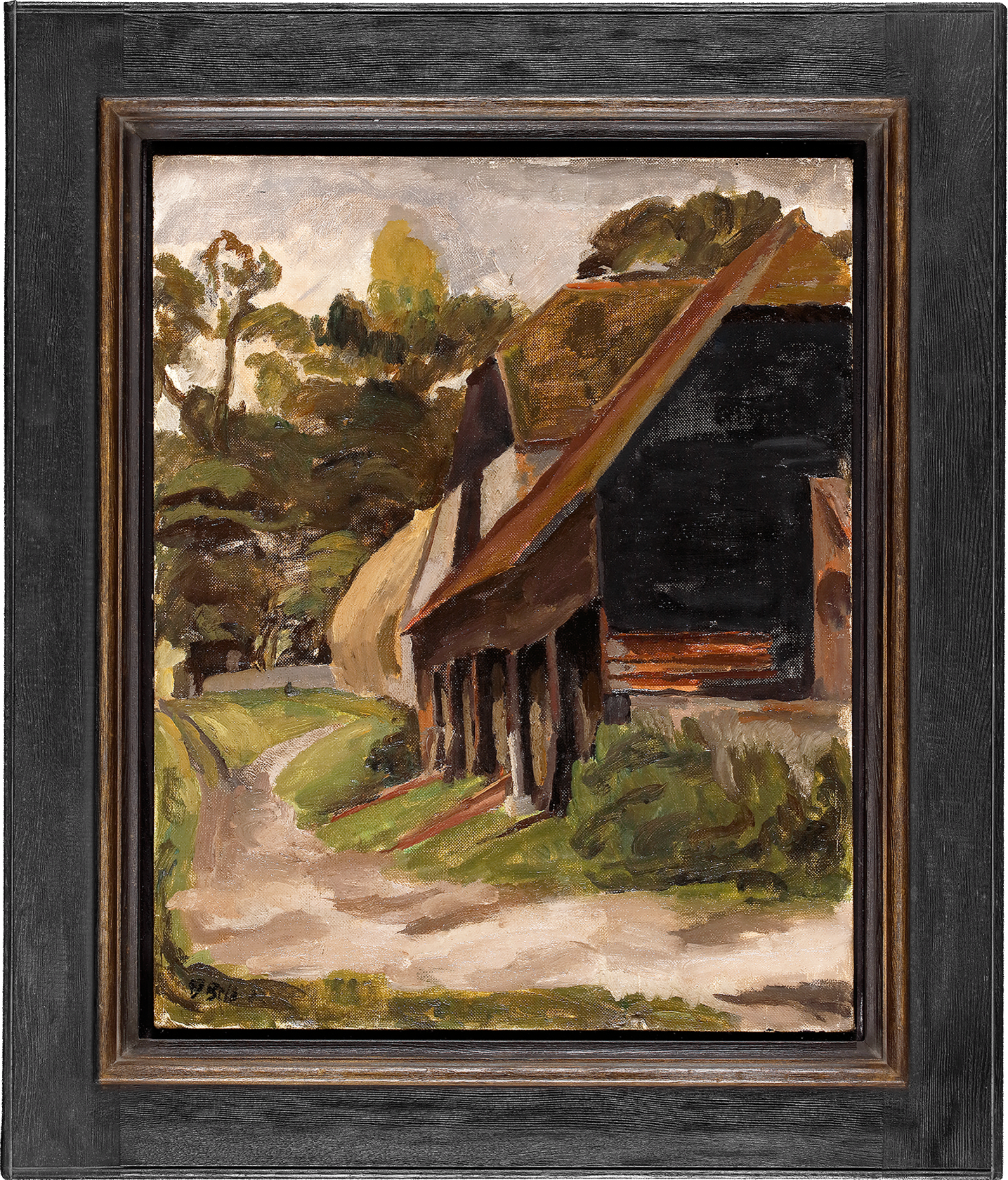In 1916, painters Vanessa Bell and Duncan Grant moved to Charleston Farmhouse, East Sussex. During both World Wars, Charleston was their permanent family home. Throughout the interwar years, it became a weekend and holiday retreat. Gradually, throughout the 20th Century, Charleston became a hub of artistic innovation for the Bloomsbury Group.
Before Vanessa and Duncan moved to Charleston, it was part of a working farm, and the pair strongly related to this history throughout their time in Sussex. In particular they explored the picturesque possibilities of the surrounding vernacular farm buildings in all seasons, and from multiple perspectives, including their interiors. Requiring no more than a few paces from the front door to capture, these edifices of antiquity and rural continuity palpably express their attachment to their homestead. During the inter-war years, Vanessa gradually began to revaluate her earlier preoccupation with colour. Writing to Roger Fry in 1923, she reflected that her concentration on colour predisposed her ‘to destroy the...
In 1916, painters Vanessa Bell and Duncan Grant moved to Charleston Farmhouse, East Sussex. During both World Wars, Charleston was their permanent family home. Throughout the interwar years, it became a weekend and holiday retreat. Gradually, throughout the 20th Century, Charleston became a hub of artistic innovation for the Bloomsbury Group.
Before Vanessa and Duncan moved to Charleston, it was part of a working farm, and the pair strongly related to this history throughout their time in Sussex. In particular they explored the picturesque possibilities of the surrounding vernacular farm buildings in all seasons, and from multiple perspectives, including their interiors. Requiring no more than a few paces from the front door to capture, these edifices of antiquity and rural continuity palpably express their attachment to their homestead. During the inter-war years, Vanessa gradually began to revaluate her earlier preoccupation with colour. Writing to Roger Fry in 1923, she reflected that her concentration on colour predisposed her ‘to destroy the solidity of objects’ and she wondered if she could somehow ‘get more of that sort of intensity of colour without losing the solidity of the objects and space’.[1] Vanessa’s reduced palette in the present work begets a tactile suggestion of volume, whilst simultaneously maintaining tonal luminosity. Her deftly layered stokes of dark paint, which build up the structure of the barn, differ from the softer elasticity inherent in her colour deployment when she first moved to Charleston.
A year and a half after she raised the issue of solidity to Roger Fry, at a talk Vanessa alluded to her newfound attentiveness to form as opposed to colour, stating that ‘The fascination of form for the artist is so absorbing…’.[2] A manifestation of this new fascination with form is discernible in this rich and highly figurative view of Charleston’s granary.
[1] Bell, V. (1923) Letter to Duncan Grant, 19 September 1923, quoted in, Marler, R. (1993) Selected Letters of Vanessa Bell. London: Bloomsbury Publishing Limited, p. 272.
[2] Bell, V. (at a talk given at Leighton Park School in January 1925), quoted in Tickner, L. (2000) Modern Life and Modern Subjects. p. 126.











